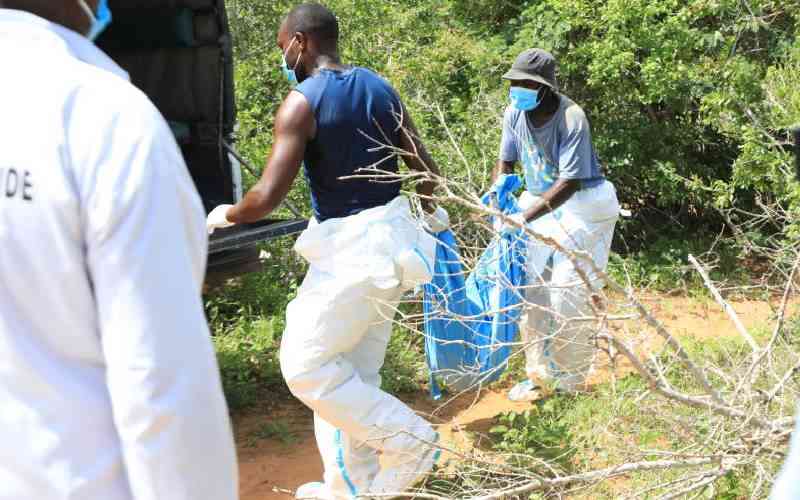 |
|
Baboon at Multimedia University College garbage dump [Photo:courtesy] |
By Nicanor Ndiege
Love them or hate them, but it is true that the wild animals in our communities enrich our lives and represent a vital link to the natural world.
Today, we no longer depend on them for food or fur, and the notion that they exist solely to provide recreation and diversionary pleasures for our kind is discredited.
Our cities, towns and institutions have turned into safe havens that offer hospitality to this once-decimated population and Multimedia University College of Kenya (MMU) is not an exception to this.
A walk in this higher learning institution will offer you an opportunity to meet various wild animals like the warthogs, baboons, and monkeys eating peacefully without causing any havoc to students. Wild animals here viewed as the members of the living society to which the institution belong.
Here, the MMU community gets the opportunity of meeting these wild animals again after so many years of estrangement and unfamiliarity.
To wild animals, an opportunity is an opportunity. If we grow plants they like to eat or offer shelter in uncapped chimneys, that is fine with them and it is a guarantee to peaceful co-existence.
By viewing these wild animals as members of our community whose well being we have become urgently concerned with, we are encouraged to reject the idea that humans are the center of the living world and embrace the idea that we are a part of other living things.
In turn, this has enabled us to give a greater moral consideration to the animals and the environments that sustain us all.
But as our growing residential and commercial developments further displace wildlife by taking over their space; we are faced with resolving conflicts with wild animals.
Our lives are not likely to be ever free of conflicts with wild animals as there are isolated cases of wild life attack on students.
Jessica Kemunto, a second year student, was attacked by male Baboon when she was from the campus canteen forcing her to drop her mandazis for the creature to feast on.
Jessica thought that the Baboon was not going to harm her since some of them fear humans. She was shocked thus shocked when one came after her, that day.
“I never thought the Baboon could attack me when I was from the canteen carrying five mandazis in a transparent polythene for my breakfast. Surprisingly, it jumped out of the live fence heading towards me while roaring prompting me to drop the mandazis and take to my heels,” narrates Jessica.
Even though the baboon did not bite her, the episode instilled fear among many girls in the institution. After the incident, other students avoided the path and resorted to alternative routes to avoid becoming the next victims.
“I think the creature was just hungry and took advantage of the fact that I was a lady to scare me so that I could drop my food for it to eat,” Jessica explained.
Though we are at sometimes confronted with such incidences, we should not resort to lethal means of resolving them. We must realize that animals too have rights, and are of great importance to the country.
Stay informed. Subscribe to our newsletter
Human-wildlife conflict has been on the rise in the country with the most popular occurrence being the Kitengela lion killings where residents killed six lions after the animals attacked their livestock.
Though wildlife can be of harm to us, we should not resort to lethal means to resolve the conflict. Perhaps we should just begin by investigating and understanding the considerable arsenal of ideas, tools, and techniques at our disposal to resolve conflicts with wild animals without causing them, us, or the environment harm.
This can be done through consulting relevant authorities in this field like Kenya Wildlife Services (KWS) and other stakeholders so that we put in place smooth and nonlethal procedures of resolving human-wildlife conflicts in our midst.
We must all accept that it is incumbent upon us to show commitment to our wild neighbors with a view to creating a world in which we all can live in harmony.
Nicanor Ndiege is a Faculty of Media and Communication Student at Multimedia University College of Kenya and also a freelance in print and photo journalism. He resides in Nairobi.
 The Standard Group Plc is a
multi-media organization with investments in media platforms spanning newspaper
print operations, television, radio broadcasting, digital and online services. The
Standard Group is recognized as a leading multi-media house in Kenya with a key
influence in matters of national and international interest.
The Standard Group Plc is a
multi-media organization with investments in media platforms spanning newspaper
print operations, television, radio broadcasting, digital and online services. The
Standard Group is recognized as a leading multi-media house in Kenya with a key
influence in matters of national and international interest.
 The Standard Group Plc is a
multi-media organization with investments in media platforms spanning newspaper
print operations, television, radio broadcasting, digital and online services. The
Standard Group is recognized as a leading multi-media house in Kenya with a key
influence in matters of national and international interest.
The Standard Group Plc is a
multi-media organization with investments in media platforms spanning newspaper
print operations, television, radio broadcasting, digital and online services. The
Standard Group is recognized as a leading multi-media house in Kenya with a key
influence in matters of national and international interest.









